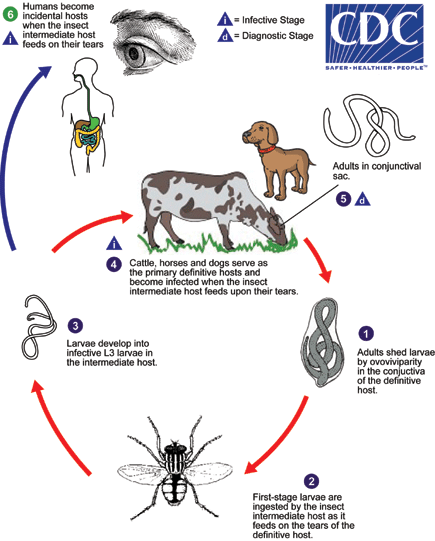Scientific name Thelazia Phylum Nematoda Order Spirurida | Higher classification Thelaziinae Rank Genus | |
 | ||
Similar Thelazia callipaeda, Roundworms, Dictyocaulus, Oesophagostomum, Trichostrongylus | ||
Thelazia
Thelazia is a genus of nematode worms which parasitize the eyes and associated tissues of various bird and mammal hosts, including humans. They are often called "eyeworms," and infestation with Thelazia species is referred to as "thelaziasis" (occasionally spelled "thelaziosis"). Adults are usually found in the eyelids, tear glands, tear ducts, or the so-called "third eyelid" (nictitating membrane). Occasionally, they are found in the eyeball itself, either under the conjunctiva (the membrane that covers the white part of the eye) or in the vitreous cavity of the eyeball. All species of Thelazia for which the life cycle has been studied are transmitted by species of Diptera (flies) which do not bite, but which feed on tears.
Contents
Thelazia eye worm
Representative species
References
Thelazia Wikipedia(Text) CC BY-SA
